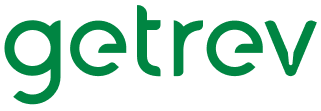Demand generation (aka demand gen) is all about creating awareness and interest for your brand and what you have to offer. Unlike lead generation, demand generation is a long-term approach that focuses on building relationships with customers rather than simply acquiring new leads.
However, that’s not to say that demand generation can’t be used to generate leads. In fact, an effective demand generation strategy can help you generate higher-quality leads that are more likely to convert into customers.
So, if you’re ready to add demand generation to your marketing strategy but need some inspiration, you’ve come to the right place! In this blog post, we’ll be looking at seven examples of B2B companies that excel at demand generation marketing.
At the end of this post, we’ll also share our #1 tip on how to make generating high-quality leads from these demand generation tactics a whole lot easier.
Let’s begin!
7 B2B demand Generation examples
#1 HubSpot
HubSpot, the inbound marketing and sales platform, is a company that knows a thing or two about demand generation. In fact, they use nearly all of the demand gen tactics we’ll share in this post. But the one we’ll use as an example here is HubSpot’s robust collection of educational content.
Demand generation tactic: Educational content
HubSpot has an extensive library of free content that covers everything from inbound marketing to sales enablement. For example, HubSpot offers ebooks, templates, checklists and even certification courses—all for free, and available for anyone to access.
Why this demand gen tactic works
Educational content is a great way to generate demand because it helps potential customers learn about your product or service and how it can help them solve their specific problems. It also helps to build trust and credibility with your target audience. According to recent surveys, almost half of B2B decision-makers report consuming at least 3-5 pieces of content before contacting a salesperson.
How you can implement this tactic
If you’re not already, start creating helpful, informative content that your target audience will find valuable. This can be in the form of blog posts, ebooks, infographics, case studies, whitepapers or even just simple how-to tutorials. Once you have this content, make sure it’s easy to find on your website by creating a dedicated section for it and promoting it through your other marketing channels.
#2 Neil Patel Digital
If you haven’t heard of Neil Patel, are you even a digital marketer? Just kidding. But seriously, Neil Patel is a huge name in the digital marketing world, and for good reason. He and his team effectively use a wide range of demand generation strategies worth analyzing and implementing in your business. The example we’ll look at here is Neil Patel’s use of free SEO tools.
Demand generation tactic: Free tools
Neil Patel’s digital marketing agency, Neil Patel Digital, offers a suite of free SEO tools, including Ubersuggest and Answer The Public. These tools are designed to help businesses improve their online visibility and organic search traffic. But these free tools also help build awareness for Neil Patel Digital and position this agency as one of the top experts in digital marketing.
Why this demand gen tactic works
No matter your industry, free tools can be a valuable demand generation tactic. Why? Because they offer businesses a way to provide value to their target audience without any risk or investment. Free tools also serve as lead magnets, providing an easy way to capture leads and contact information.
How you can implement this tactic
When selecting a free tool to give away, there are a few things to keep in mind. Your free tool should be:
- Relevant to your business and industry
- Something people will actually use and find helpful
- Easy to use and understand
For example, your free tool could be a software application, an online calculator or even a set of templates. Once you’ve selected the right free tool, promote it through your website and social media channels. You can also include it in email marketing campaigns and run ads to drive traffic to a landing page.
#3 Monday.com
Monday.com is a project management software that helps teams collaborate on tasks and projects. If you use YouTube, you’ve probably seen at least one of their ads. That’s because one of their key demand generation tactics is video marketing.
Demand generation tactic: Video marketing
Monday.com uses video marketing to promote its software, build demand and drive leads. They create engaging, creative videos that show how their software can be used in businesses. They then post these videos on their YouTube channel and run ads that target people who are interested in project management software.
Why this demand gen tactic works
Video allows you to get creative with your marketing and tell stories that will resonate with your target audience. And this is exactly what’s needed to build awareness for your brand. According to Wyzowl’s 2022 State of Video Marketing Survey, 93% of marketers believe video marketing has helped them increase brand awareness.
How you can implement this tactic
If you’re looking to use video marketing to generate demand, start by creating engaging, creative videos that tell a story and showcase your product or service in action. Once you have your videos, post them on your website and social media. You can also run video ads on platforms like YouTube and Facebook.
#4 Adobe
You probably know Adobe is a digital media software company. But did you know they’re also one of the best B2B demand generation examples out there? One of the reasons is that Adobe has mastered the use of social media marketing to generate demand for its products.
Demand generation tactic: Social media marketing
Adobe uses social media platforms like Twitter, LinkedIn and Instagram to share compelling content that’s informative and entertaining, typically showcasing their products and how their target consumers use them in their businesses. They also use social media platforms to run targeted ads that drive potential leads to their website.
Why this demand gen tactic works
Social media marketing is an effective way to reach a large number of potential customers with targeted content. By sharing interesting and engaging content, you can build brand awareness, trust and credibility with potential customers, which can lead to more sales.
How you can implement this tactic
If you want to use social media marketing to improve your demand generation, start by creating a social media profile for your business on the platforms where your target customers are most active. Then, create and share interesting and engaging content that will appeal to and educate your target customers.
#5 Ahrefs
Ahrefs is a software company that helps businesses improve their search engine optimization (SEO). The company offers a suite of SEO tools, including a keyword research tool, competitor analysis tool and backlink checker. But, the demand generation example we’ll look at here will be their value-packed email newsletter.
Demand generation tactic: Email newsletter
Within their newsletter, Ahrefs shares a weekly roundup of the newest content and insights on all things SEO. But, they don’t just share any old content. The team at Ahrefs carefully curates each week’s roundup to ensure that only the best and most actionable content is included.
Why this demand gen tactic works
By packing its newsletter with value, Ahrefs nurtures its email list and keeps its platform at the top of each prospect’s mind. The newsletter also includes a CTA to Ahrefs’ blog and YouTube channel, which helps generate leads and traffic for the company.
Ahrefs doesn’t use its newsletter to directly sell to subscribers. But newsletters also provide an excellent way for businesses to introduce new services and drive demand for them without having to pay to place ads on third-party platforms.
How you can implement this tactic
You can implement this demand gen tactic by curating content that would be of value to your target audience. You can start by surveying your target audience to see what kinds of content they would find most valuable. Then create an editorial calendar to ensure a consistent flow of engaging content.
#6 Litmus
Litmus is an email marketing tool that makes it easy for businesses to create, test and track the performance of their email campaigns. One of the ways they’ve been able to build awareness for their brand is through informative, on-demand webinars.
Demand generation tactic: Webinars
Litmus puts together webinars led by industry experts on topics related to email marketing. These webinars are a great way for businesses to learn more about email marketing and see how Litmus can help them reach their goals faster.
Why this demand gen tactic works
Webinars are a great way to generate demand and leads because they allow businesses to showcase their expertise on a particular topic. By hosting webinars on topics that are relevant to its target audience, Litmus is able to position itself as a thought leader in the email marketing space.
How you can implement this tactic
Here are three foundational requirements of a webinar capable of generating demand:
- You need to make sure that the topic of your webinar is relevant to your target audience.
- You need to promote your webinar through various channels to make sure that as many people as possible are aware of it.
- You need to ensure that the quality of your webinar is top-notch so viewers leave feeling like they’ve been given some of your business’s most useful information for free.
If you can at least do these three things, you’ll be well on your way to generating demand and leads through webinars.
#7 Rev
Rev is the Sales Development Platform that helps businesses use AI to analyze their best customers and find others that exhibit those same patterns and behaviors. At Rev, we use several different strategies to generate demand for our platform. All, however, start by with exegraphics.
Demand generation tactic: Exegraphics
Typically, you’ll start your demand gen strategy—from content to channels to nurture programs—with your ideal customer profile (ICP) in mind. But there’s just one problem: most ICPs are shallow, incomplete representations of the businesses in your total addressable market. Why?
Because ICPs tend to be based on firmographic data that only tells you things like industry, company size and location. Those data points only offer a limited view of your potential customers.
By incorporating exegraphics data—deep insights into how a company executes its mission—you can get very precise in your targeting and your messaging.
Why this demand gen tactic works
To truly create an effective demand generation campaign, you need to go beyond firmographics and get to know how your target companies operate and behave. And that’s where exegraphics comes in.
What are exegraphics? Exegraphics are the factors that influence a company’s decision-making. They include things like:
- The pain points a company is currently experiencing
- Trends affecting their industry and target markets
- The type of decision-maker your content needs to appeal to
By understanding exegraphics, you can create targeted demand generation campaigns that are much more likely to convert than generic campaigns. How? Because exegraphics give you the information you need to speak directly to your target companies’ needs.
How you can implement this tactic
How do you find exegraphic data? Rev’s Sales Development Platform uses AI technology to collect information found on a business’s website, social media platforms, job postings and more. Someone on your team could manually find all of this information. But it would likely take a lot of time and be an inefficient use of your resources.
With Rev, you can quickly gather exegraphic data on your best customers—and identify other accounts that resemble them too. (Did we mention that the target account list you can build in Rev is also prioritized?)
Want to see how exegraphics work yourself? Reach out to get a free ICP audit that will help you identify the characteristics of your best customers so you can create the most effective demand generation campaign possible!


